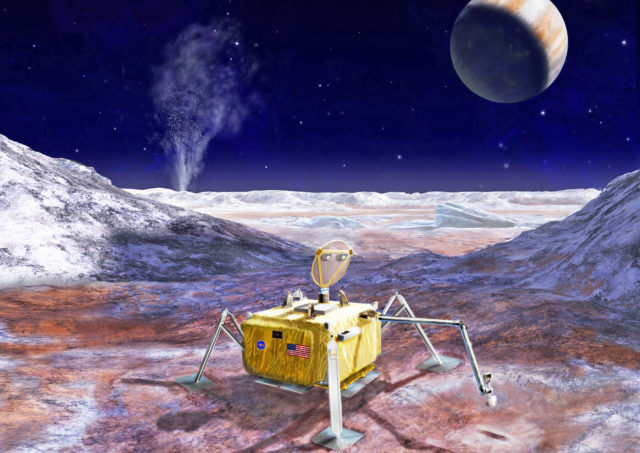NASA Wants To Send Lander To Europa To Detect Life
NASA is fixing to send a life-detecting lander to Europa! Hey, detect that life, folks. Cause god knows how much longer we’re going to have it here, right? Too morbid? Too morbid!
Back in June 2016, NASA commissioned 21 scientists to design a landerheaded for Europa, conjure up science objectives for it and figure out if the mission is feasible. After around eight months of deliberation, the scientists have finally completed their assignment and presented their report (PDF) to the space agency. As you can see above, they went for a boxy spacecraft with spindly legs to accomplish the mission’s goals, the biggest ofa which is to find signs of past and present life.Scientists believe that Europa’s icy crust is hiding a global saltwater ocean. They also believe that ocean is in contact with a rocky, silicate seafloor, which is a necessary source of elements and energy needed to give rise to and sustain life. The only other ocean in contact with a seafloor outside our planet is Saturn’s moon Enceladus, making Europa an ideal world to explore if we want to find extraterrestrial life forms.
Next in the lander’s goal list is assessing whether Europa is habitable by examining its non-ice materials. Finally, it has to characterize the properties of its surface and subsurface materials for future explorations. It’ll be a long time before this lander takes off, though — it was designed to follow the Europa Multiple Flyby Mission that’s scheduled to launch in the 2020s. If it does push through, it’ll be the first mission since the 1970s’ Martian Viking program that will “conduct… in situ search for evidence of life on another world.”




